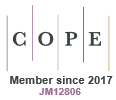Empowering adolescent girls in Pakistan: development and feasibility of the Girls’ Voices Curriculum for advocacy and leadership
Komal A. Rahim A # , Zohra S. Lassi B C # , Sarmad Muhammad Soomar D and Salima Meherali E *
B C # , Sarmad Muhammad Soomar D and Salima Meherali E *
A
B
C
D
E
Abstract
Adolescence is a pivotal stage of life, yet many adolescent girls in Pakistan face significant challenges due to gender inequality and limited opportunities for empowerment. To address these gaps, Rise Up and Girl Up introduced the ‘Girls’ Voices Curriculum’: a 10-week program to empower underprivileged girls through girl-led advocacy and decision-making.
Piloted in three suburban schools in Sindh Province, Pakistan, the curriculum was evaluated for cultural acceptability and feasibility through workshops with 86 teachers and school administrators.
The findings highlight its relevance, cultural sensitivity, and potential to address adolescent girls’ needs. Ongoing efforts aim to integrate the curriculum into schools and evaluate its effectiveness in fostering gender equality, problem-solving, and leadership skills.
This initiative holds promise as a scalable model for empowering adolescent girls in Pakistan and similar contexts.
Keywords: developing countries, girls’ empowerment, Girls’ Voices Curriculum, Karachi, Pakistan, sex education, sexuality education, teachers.
References
2 UNICEF. Update on the context and situation of children: Pakistan. Country office annual report Pakistan. UNICEF; 2020. Available at https://www.unicef.org/media/102551/file/Pakistan-2020-COAR.pdf.
3 Ahmad S, Ahmad DA, Shair W, et al. Unlocking Pakistan’s youth potential: a comprehensive analysis of youth development indices and strategic alignment with the UN sustainable development goals. JPRSS 2022; 9(2): 80-95.
| Google Scholar |
5 Commonwealth of Learning. Join girls inspire at the women deliver 2019 conference in vancouver. 2019. Available at https://www.col.org/news/join-girls-inspire-at-the-women-deliver-2019-conference-in-vancouver/
6 Girl Up, Rise Up. Girls’ Voices Curriculum. A collaboration by Girl Up and Rise Up. Girl Up: Rise Up; 2018. Available at https://riseuptogether.org/wp-content/uploads/2019/05/Girls-Voices-Curriculum.pdf


